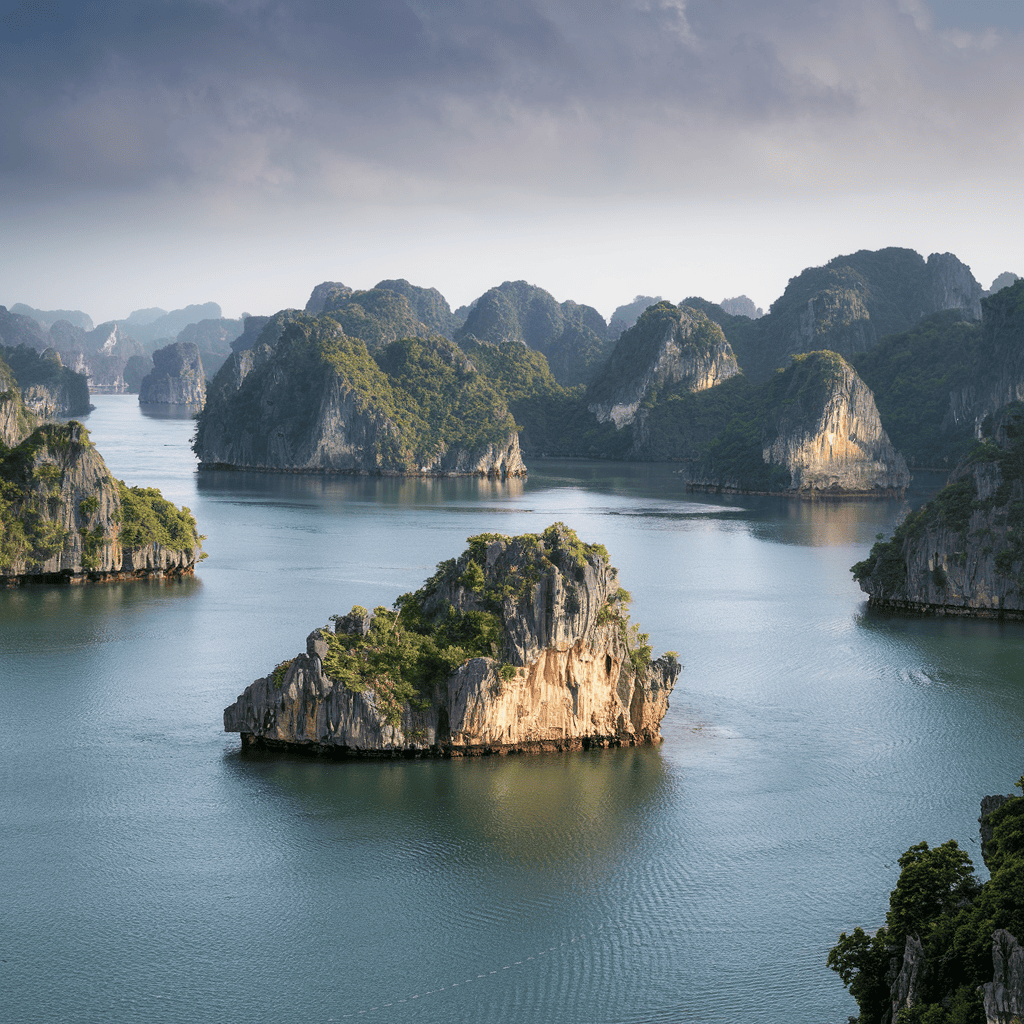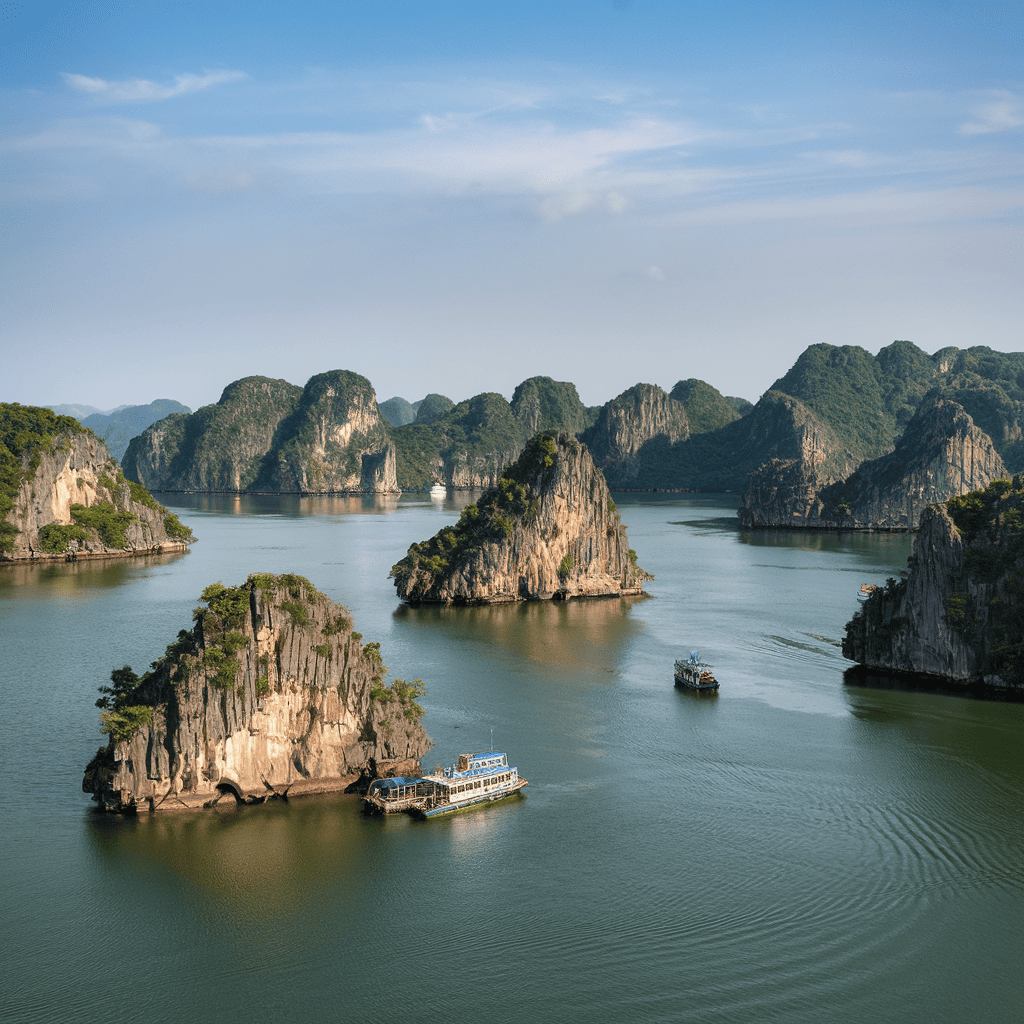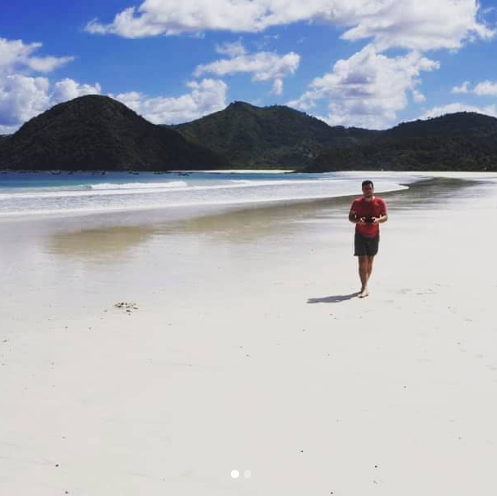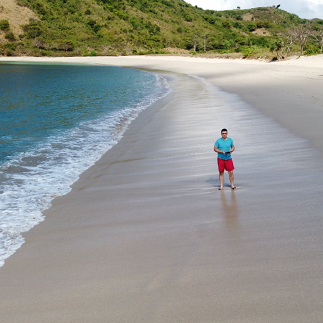Top Things to Do in Ha Long Bay for Every Traveler
Ha Long Bay is a playground for adventurers, culture enthusiasts, and those simply seeking serenity. With its dramatic limestone karsts, hidden caves, and vibrant floating villages, there’s something for everyone in this UNESCO World Heritage Site. Here’s a curated list of the top things to do in Ha Long Bay in 2025, ensuring an unforgettable experience for every type of traveler.
1. Take a Scenic Cruise Through the Karsts
A Ha Long Bay cruise is the quintessential way to experience this natural wonder. Traditional junk boats or modern luxury cruises glide through the emerald waters, offering panoramic views of the bay’s 1,600+ limestone islets. Opt for a day trip or an overnight cruise to catch a magical sunrise over the karsts. Many cruises include stops for kayaking, swimming, or visiting caves, making it a perfect all-in-one adventure.
2. Kayak Through Hidden Lagoons and Caves
For a more intimate experience, grab a kayak and paddle through Ha Long Bay’s hidden lagoons and sea caves. Places like Ba Ham Lake, accessible only by small boats or kayaks, reveal secluded spots surrounded by towering cliffs. Kayaking lets you explore at your own pace, getting up close to the bay’s unique rock formations and marine life. The area around Dark and Bright Cave (Hang Sang Toi) offers calm waters and stunning scenery.
3. Explore Mystical Caves Like Sung Sot (Surprise Cave)
Ha Long Bay is dotted with incredible caves carved into its limestone islands, and Sung Sot Cave is a must-see. Known as “Surprise Cave,” it’s one of the largest and most impressive, with three chambers filled with stalactites, stalagmites, and natural rock formations illuminated by soft lighting. The views from the cave’s highest point, overlooking the bay, are breathtaking. Other notable caves include Thien Cung (Heavenly Palace Cave) and Me Cung (Maze Cave). Me Cung Cave has archaeological significance, with artifacts dating back 10,000 years.
4. Visit a Floating Fishing Village
Get a glimpse of local life by visiting one of Ha Long Bay’s floating villages, such as Cua Van or Vung Vieng. These communities, built on the water, are home to families who’ve lived off the sea for generations. You’ll see floating houses, schools, and even markets, all bobbing gently on the waves. Many cruises or day tours offer guided visits, where you can learn about the villagers’ traditions and try rowing a bamboo boat.

5. Climb Titop Island for Panoramic Views
Titop Island is a popular stop for its small beach and a steep but rewarding hike to its summit. The 10-15 minute climb up 400 steps leads to a viewing platform with 360-degree views of Ha Long Bay’s karsts and waters. It’s a great spot for photos, especially during sunrise or sunset. After hiking, cool off with a swim at the island’s sandy beach.
6. Try Local Seafood on a Night Cruise
Ha Long Bay’s culinary scene is as captivating as its scenery. Many overnight cruises offer freshly caught seafood dinners, featuring dishes like grilled squid, steamed prawns, and Cha Muc (squid sausage), a local specialty. Pair your meal with a glass of Vietnamese rice wine while watching the stars reflect on the bay’s calm waters.
7. Go Squid Fishing at Night
For a unique evening activity, join a squid fishing excursion, often included in overnight cruises. As the sun sets, boats anchor in quiet spots, and you’ll use lights to attract squid to the surface. It’s a fun, hands-on experience, and if you’re lucky, you can catch your own squid for the chef to prepare. Even if you don’t catch anything, the serene night views of the bay are worth it.
8. Relax on a Secluded Beach or Swim in the Bay
While Ha Long Bay isn’t known for sprawling beaches, it has hidden gems like the beaches on Soi Sim Island or Ban Chan Beach. These spots are perfect for a quiet swim or sunbathing away from the crowds. The bay’s waters are generally calm, making them ideal for a refreshing dip surrounded by dramatic scenery.
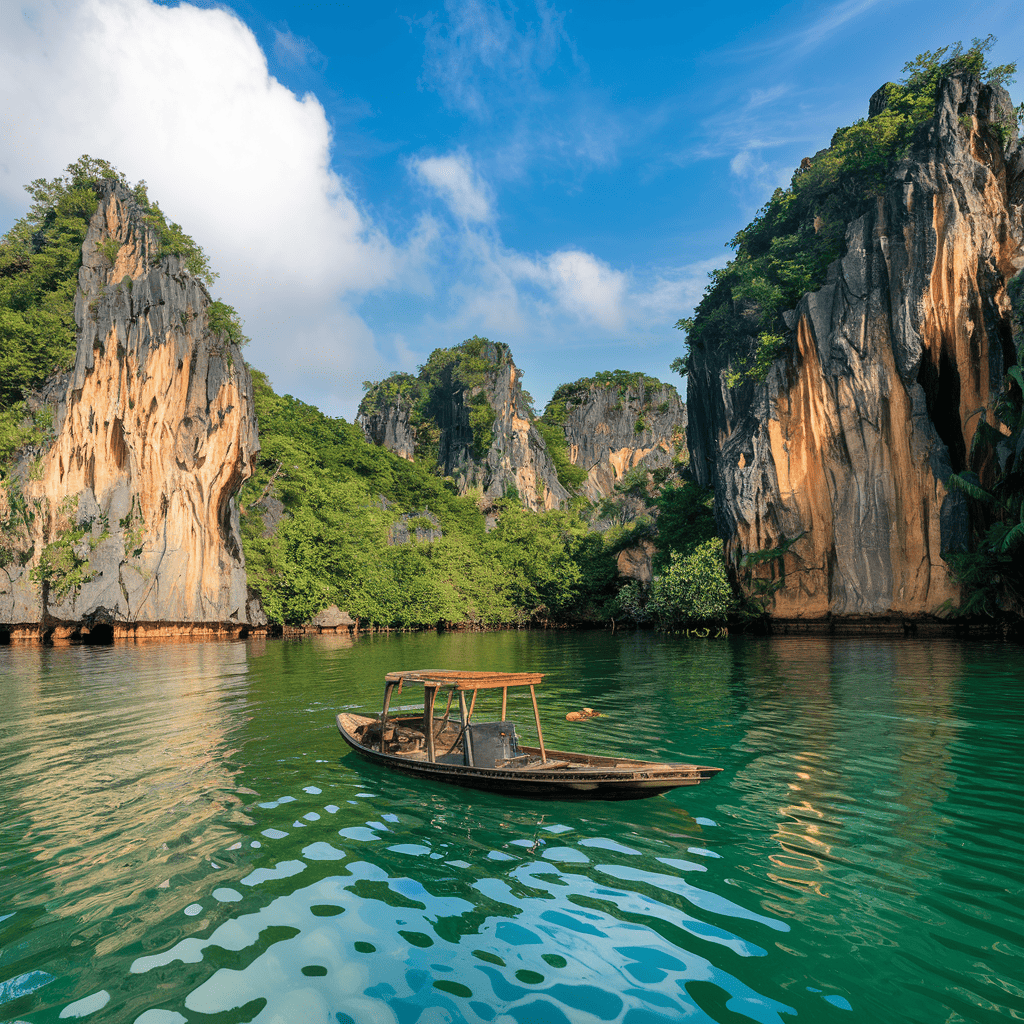
9. Capture the Perfect Sunrise or Sunset
Ha Long Bay’s ethereal beauty peaks during sunrise and sunset, when the sky casts golden or pink hues over the karsts. Whether you’re on a cruise, kayaking, or perched on a viewpoint like Titop Island, these moments are pure magic. Photographers will love the interplay of light and shadow on the water and rocks.
10. Learn About Ha Long Bay’s Myths and Legends
Immerse yourself in the bay’s folklore by learning about its mythical origins. Locals believe dragons created the islands to protect Vietnam, and many rock formations are named after these legends—like the “Fighting Cock” islet (Hon Ga Choi), which resembles two roosters facing off. Some cruises offer storytelling sessions, or you can chat with locals in the floating villages to hear their tales.
Best Ha Long Bay Cruises: Luxury, Budget & Hidden Gems
A cruise through Ha Long Bay is the ultimate way to experience its UNESCO-listed splendor, with its emerald waters and limestone karsts offering a backdrop like no other. Whether you’re seeking opulence, affordability, or a quieter escape, the best Ha Long Bay cruises in 2025 cater to every taste and budget. Here’s a breakdown of top options across luxury, budget, and hidden gem categories to help you plan your perfect voyage.
Luxury Cruises: Indulge in 5-Star Splendor
For travelers craving comfort and exclusivity, luxury cruises in Ha Long Bay deliver an unparalleled experience. These 5-star vessels often feature spacious cabins with private balconies, gourmet cuisine, and amenities like spas, jacuzzis, and rooftop bars. Popular choices include modern ships with contemporary designs and traditional junks blending Vietnamese aesthetics with top-tier service. Expect itineraries that explore iconic sites like Sung Sot Cave and Titop Island, often with added perks like limousine transfers from Hanoi (around 2.5-3 hours away). Prices typically range from $200-$400+ per person for a 2-night trip, and some exclude alcoholic drinks or extras like spa services, so check inclusions. Two-night cruises are recommended to fully enjoy the experience without feeling rushed.
Budget Cruises: Affordable Adventures
Don’t let a tight budget stop you from exploring Ha Long Bay—budget cruises offer a fantastic value, often starting at $70-$150 per person for a 2-day, 1-night trip. These 3-star options typically feature traditional wooden designs with 14-18 compact cabins (around 14-15m²), some with windows instead of balconies. While you won’t find pools or gyms, the focus is on nature and simplicity, with activities like kayaking, cave visits, and cooking classes included. Routes may cover popular spots or quieter areas like Bai Tu Long Bay. Cabins can feel snug, and meals are simpler (think 3-course dinners rather than buffets). Book during the low season (May-September) or hunt for early-bird deals to save more. Confirm transfer costs from Hanoi, as some aren’t included.
Hidden Gems: Off-the-Beaten-Path Escapes
For those eager to avoid crowds, hidden gem cruises venture into lesser-known areas like Lan Ha Bay or Bai Tu Long Bay, offering a serene alternative to Ha Long Bay’s busier routes. These cruises often feature newer vessels with modern facilities, blending luxury and tranquility. Expect pristine beaches, secluded lagoons, and visits to fishing villages or caves like Dark and Bright Cave. Some operators offer customizable itineraries, though regulatory limits mean routes are somewhat fixed—focus on operators highlighting offbeat stops.
Book your cruise on the official Ha Long Bay Cruises website.
Exploring Ha Long Bay’s Stunning Islands and Caves
Ha Long Bay is a treasure trove of natural wonders, with over 1,600 islands and countless caves carved into its limestone karsts. Each island and cave offers a unique glimpse into the bay’s geological history, biodiversity, and cultural significance, making exploration a highlight of any visit. Whether you’re hiking for panoramic views, stepping into ancient caverns, or simply soaking in the surreal scenery, here’s how to experience Ha Long Bay’s most stunning islands and caves in 2025.
Titop Island: A View Worth the Climb
Titop Island is one of Ha Long Bay’s most popular stops, and for good reason. This small island features a crescent-shaped beach perfect for swimming, but the real draw is the hike to its summit. A 10-15 minute climb up 400 steps rewards you with a 360-degree view of the bay’s karsts piercing the emerald waters—a sight that’s especially magical at sunrise or sunset. The island was named after Soviet cosmonaut Gherman Titov, who visited in 1962, adding a historical twist to your adventure. The path can be steep and sweaty, but there are rest spots along the way. The summit has a small viewing platform, ideal for photos. Bring water, a hat, and sturdy shoes. After the hike, cool off with a swim or relax on the beach with a coconut.
Cat Ba Island: Nature and Adventure Hub
Cat Ba Island, the largest in Ha Long Bay, is a gateway to both the bay and the adjacent Lan Ha Bay. It’s a paradise for nature lovers, with Cat Ba National Park covering much of the island. The park is home to diverse wildlife, including the endangered Cat Ba langur, and offers hiking trails through dense forests to viewpoints like Ngu Lam Peak. The island also has beaches like Cat Co 1 and 2 for relaxation, plus a lively town with markets and seafood restaurants. Ferries or speedboats from Ha Long City (about 30-45 minutes) make Cat Ba accessible. The island blends rugged exploration with laid-back vibes. Rent a scooter to explore the island independently, or join a kayaking tour from Cat Ba to paddle through Lan Ha Bay’s quieter lagoons.
Sung Sot Cave: The Surprise of Ha Long Bay
Sung Sot Cave, aptly named “Surprise Cave,” is one of Ha Long Bay’s largest and most spectacular caverns, located on Bo Hon Island. Discovered by French explorers in 1901, this cave features three massive chambers filled with dramatic stalactites and stalagmites, illuminated by colorful lights that highlight the natural formations. The third chamber opens to a viewpoint overlooking the bay, offering a stunning contrast between the cave’s interior and the outside scenery. A short boat ride from your cruise, followed by a 100-step climb to the entrance. Inside, the cave feels like a hidden world, with paths and railings for easy exploration. Look for rock formations that locals liken to animals or mythical figures—one stalagmite is famously shaped like a “turtle” for good luck.
Thien Cung Cave: A Palace in the Rocks
Thien Cung Cave, or “Heavenly Palace Cave,” lives up to its name with its ethereal beauty. Located on Dau Go Island, this cave is known for its intricate stalactite and stalagmite formations, which are lit up to create a dreamy atmosphere. Local legends say the cave was the wedding venue for a mythical dragon king, and the formations are said to resemble a bridal party. The cave’s walls are adorned with natural “sculptures,” making it a favorite for photographers. A steep climb of about 120 steps leads to the entrance, but the views inside are worth it. The cave is well-maintained with pathways and lighting. Visit early in the day to avoid crowds, as this cave is a popular stop on many cruise itineraries.
Dark and Bright Cave: A Kayaker’s Delight
Tucked away in the quieter Lan Ha Bay near Cat Ba, Dark and Bright Cave (Hang Sang Toi) offers a more intimate exploration experience. The “Dark” cave is a low tunnel you can kayak or row through, emerging into the “Bright” cave—a lagoon-like area surrounded by towering karsts and lush greenery. The contrast between the dark tunnel and the sunlit lagoon is striking, and the area’s calm waters make it ideal for paddling or swimming. Many hidden gem cruises or day tours from Cat Ba include this stop. Small boats or kayaks are required to navigate the narrow entrance. Bring a waterproof camera to capture the dramatic light changes as you exit the tunnel into the lagoon.
Dau Go Cave: History Meets Nature
Dau Go Cave, also on Dau Go Island near Thien Cung, combines natural beauty with historical significance. Its name means “Driftwood Cave,” tied to a legend that General Tran Hung Dao stored wooden stakes here during the 13th-century Mongol invasion. The cave’s three chambers are filled with stalactites and stalagmites, some resembling animals or warriors, and its high ceiling creates an airy, cathedral-like feel. The cave’s history and its proximity to Thien Cung make it a great two-in-one stop. A short walk from the boat dock leads to the entrance. The cave is less crowded than Sung Sot, offering a more peaceful experience. Look for the “fairy lake” inside—a small pool reflecting the cave’s formations, said to be a bathing spot for mythical fairies.
Soi Sim Island: A Hidden Gem for Relaxation
Soi Sim Island is a lesser-known spot, perfect for those seeking solitude. This small island features a quiet beach with soft sand and clear waters, ideal for swimming or sunbathing. A short hike through its forested trails leads to a viewpoint with sweeping views of Ha Long Bay. The island is less developed than Titop, giving it a more untouched feel, and its name—“Raspberry Island”—comes from the wild fruit that grows here. Some cruises stop here for a beach break, often paired with kayaking or swimming. The hike to the viewpoint takes about 15 minutes. Pack a picnic to enjoy on the beach, as there are no facilities on the island.
Local Food to Try in Ha Long Bay: A Culinary Adventure
Ha Long Bay isn’t just a feast for the eyes—its culinary scene is a delicious extension of Vietnam’s vibrant food culture, deeply influenced by its coastal location. From fresh seafood caught daily to unique regional specialties, a culinary adventure in Ha Long Bay in 2025 promises to tantalize your taste buds. Whether you’re dining on a cruise, exploring floating villages, or sampling street food in nearby towns, here are the must-try local dishes to elevate your trip.
1. Cha Muc (Squid Sausage)
Cha Muc is a standout dish in Ha Long Bay, blending minced squid with spices and shaping it into a savory sausage. Often grilled or steamed, it’s served with dipping sauces like nuoc cham (fish sauce with lime and chili) or hoisin. The texture is firm yet tender, with a mild seafood flavor that reflects the bay’s abundant squid harvest. You’ll find it on cruise menus or at seaside restaurants in Ha Long City. Look for it on overnight cruise dinners or local eateries near the harbor. Pair with a cold glass of bia hoi (fresh draft beer) for a true local experience.
2. Fresh Seafood Platter
Ha Long Bay’s waters yield some of Vietnam’s freshest seafood, and a platter featuring grilled prawns, steamed clams, and crab is a must. The catch is often prepared simply—grilled with salt, pepper, and lime—to highlight the natural flavors. Many cruises offer seafood feasts, while floating villages like Cua Van serve dishes straight from the fishermen’s nets. Opt for a cruise with an onboard cooking demo, or visit a floating restaurant for an authentic taste. Ask for geoduck clams, a regional delicacy with a crunchy texture, if available.
3. Banh Cuon (Steamed Rice Rolls)
A lighter option, Banh Cuon consists of thin rice flour rolls filled with minced pork, mushrooms, and shallots, topped with fried shallots and fresh herbs. In Ha Long Bay, this dish often incorporates seafood variations, adding shrimp or crab for a local twist. It’s a popular breakfast or snack, available in markets or small cafes near the bay. Head to the morning markets in Ha Long City or Cat Ba Island for the freshest rolls. Drizzle with nuoc cham and add a sprinkle of chili for an extra kick.
4. Canh Chua Ca (Sour Fish Soup)
Canh Chua Ca is a tangy, aromatic soup made with freshwater fish, tamarind, pineapple, tomatoes, and local herbs like rau om (rice paddy herb). The sour-spicy flavor balances the fish’s richness, making it a comforting dish often served with rice. In Ha Long Bay, the soup may feature snapper or mackerel caught from the bay, adding a fresh, briny note. Enjoy this on a cruise or at family-run restaurants in fishing villages. Look for versions with bamboo shoots or okra for added texture and flavor.
5. Bun Rieu (Crab Noodle Soup)
Bun Rieu is a vibrant noodle soup featuring a tomato-based broth flavored with crab paste, topped with crabmeat, tofu, and fresh greens. In Ha Long Bay, the crab is often sourced locally, giving it a distinct sweetness. The dish is served with rice vermicelli and a side of lime and chili, letting you customize the taste. It’s a hearty meal perfect for a rainy day. Seek out small eateries on Cat Ba Island or near the harbor in Ha Long City. Add a dollop of crab roe (if offered) for a richer flavor.
6. Hai San Nuong (Grilled Seafood)
Hai San Nuong, or grilled seafood, showcases Ha Long Bay’s bounty with dishes like squid, scallops, and oysters cooked over charcoal. The seafood is marinated with garlic, butter, or chili, creating a smoky, savory flavor that pairs beautifully with the bay’s coastal vibe. Many cruises offer this as part of a barbecue night, often on a secluded beach. Look for beachside barbecues on Soi Sim Island or during a cruise stop. Try the grilled oysters with a squeeze of lemon for a simple yet divine taste.
7. Banh Da Cua (Crab Cake Noodles)
Banh Da Cua is a regional specialty featuring wide rice noodles in a rich broth, topped with crab cakes made from fresh crab meat and eggs. The dish is garnished with green onions and a hint of pepper, offering a creamy yet light flavor. It’s a lesser-known gem that highlights the bay’s crab fishing heritage. Available at local stalls in Cat Ba Town or through some cruise operators. Ask for extra chili paste to enhance the dish’s warmth.
